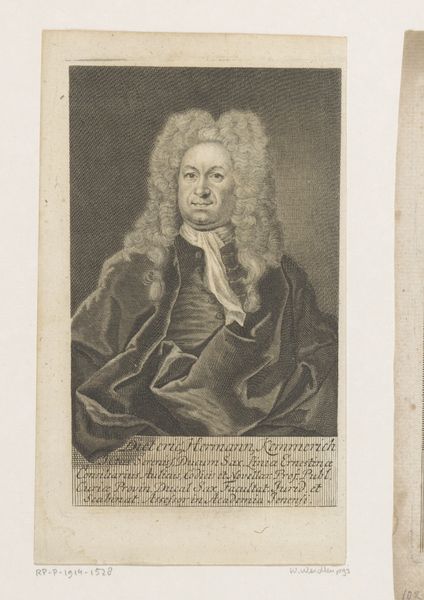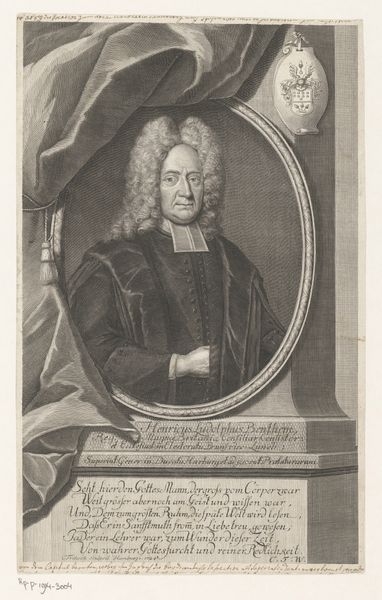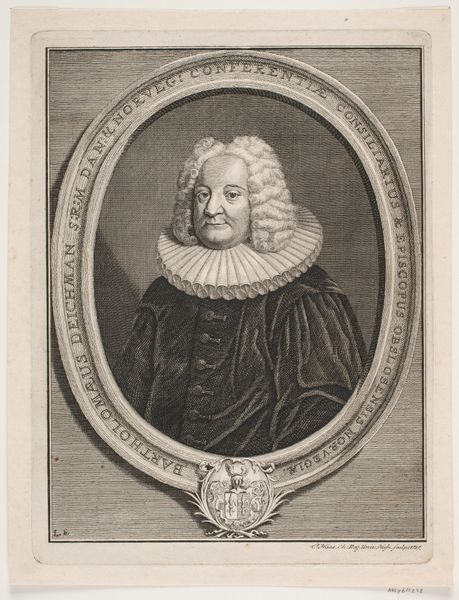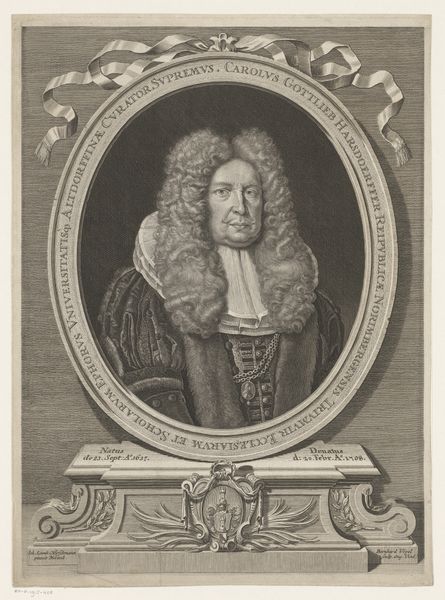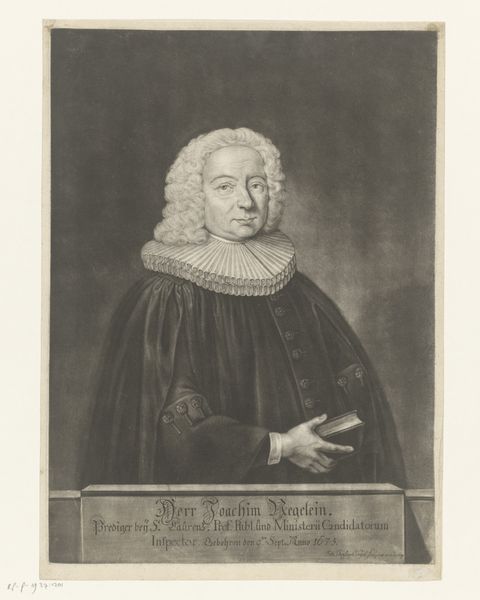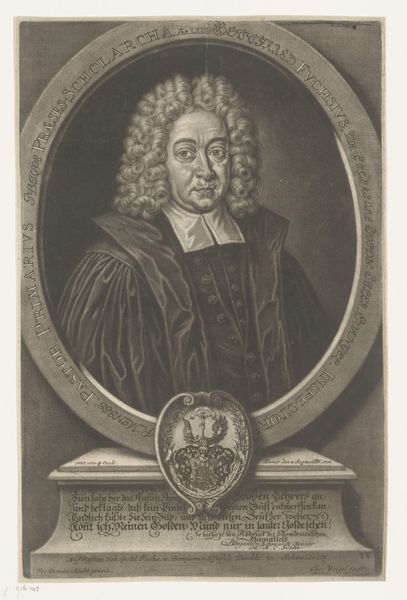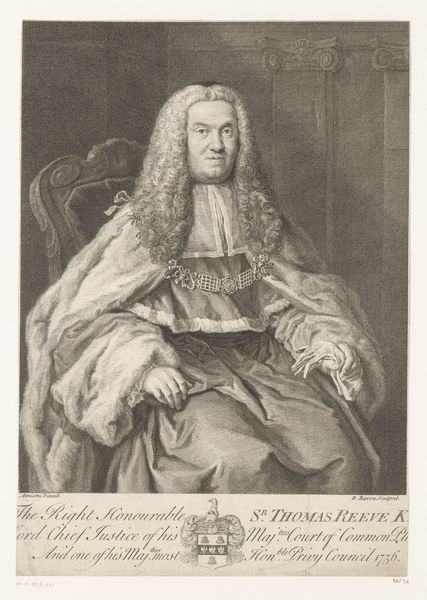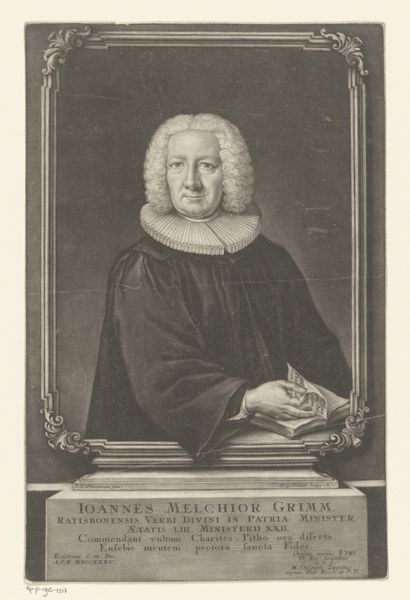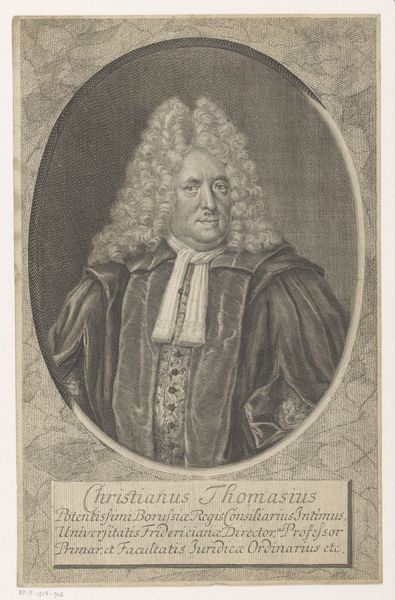
print, engraving
#
baroque
# print
#
old engraving style
#
line
#
portrait drawing
#
engraving
Dimensions: height 476 mm, width 312 mm
Copyright: Rijks Museum: Open Domain
Editor: This is a print, an engraving to be exact, made in 1729 by Georg Martin Preissler. It's titled "Portret van Johannes Jacobus Silberrad." It's quite formal and imposing, a real statement of authority. What catches your eye about it? Curator: It’s fascinating how prints like this circulated ideas about power and status in the 18th century. What do you make of Silberrad’s elaborate wig and robes? Editor: Well, they certainly scream wealth and importance. But does it go beyond just showing off? Curator: Precisely. Think about the intended audience. Prints were a relatively accessible medium. This image would have been seen by a broader public than an oil painting of the same subject. The portrait becomes a tool, not just for commemorating an individual, but for projecting and reinforcing social hierarchies. Who do you think this engraving would have impressed the most, and why? Editor: Perhaps it would impress those aspiring to rise in social circles or those within his circle, reinforcing their belief in the established order? The inscription is fascinating; I can recognize several Latin words denoting his official titles and origin! Curator: Exactly. The visual language, combined with the explicit textual details about his status – councillor, professor, and so on – works to solidify his position within the societal framework. Did images like this simply reflect existing power structures, or actively shape them? Editor: It’s interesting to consider it as an active participant. Like a carefully crafted piece of propaganda, meant to inspire awe or maybe even obedience. Thank you, that changes my perspective. Curator: And mine as well! Thinking about how these images operated in their own time allows us to view them, not as passive reflections, but as active players in the social and political landscape.
Comments
No comments
Be the first to comment and join the conversation on the ultimate creative platform.


